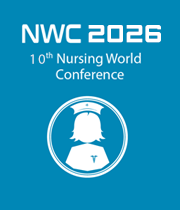Title : Leading the shift: Staff empowerment in redefining post-thrombolytic care excellence
Abstract:
Background: Acute ischemic stroke is an urgent condition where blood flow to the brain gets blocked causing sudden onset of focal neurological deficits, which requires immediate attention. Thrombolytic therapy is a cornerstone intervention for patients at risk of life-threatening blood clots, with its efficacy closely tied to the quality of post-treatment care. Critical components of this care include vigilant monitoring and precise documentation, both of which are essential in mitigating complications and optimizing clinical outcomes. Recognizing the evolving demands of stroke care, The Neuro Acute Care Unit (ACU) has recently expanded its services to accommodate post-thrombolysis patients, reflecting the unit’s commitment to comprehensive stroke care.
Purpose/ Objective: (1) Expand Admission Capabilities: Enable the Neurology ACU to safely admit and care for post-thrombolytic patients, aligning with best practices traditionally seen in ICU or intermediate care settings; (2) Ensure Staff Adherence: Provide education, training, and resources to equip staff with the necessary knowledge and skills to comply with monitoring and documentation while ensuring patient safety and good outcomes among those patients treated with thrombolytic for acute ischemic stroke.
Methods: To guide this process effectively, the PDCA (Plan-Do-Check-Act) model was utilized starting in April 2023, facilitating seamless implementation, evaluation, and continuous improvement. A combination of in-service education, simulation training, badge buddy usage, chart audit and case reviews, and feedback mechanisms were used as part of a hybrid approach. Chart audits and case reviews were conducted for patients admitted to the Neuro ACU after receiving thrombolytic therapy between August 2023 and August 2024 (N=70) to assess both staff compliance with established protocols and patient outcomes.
Results: Overall, the data trends showed a relatively consistently high compliance rate in monitoring activities and documentation in vital signs, neuro checks, and adverse reaction assessment within the Neuro ACU throughout the thirteen-month period. Regarding clinical outcomes, 90% of patients showed symptom improvement. Additionally, 69% showed no adverse reaction within the first 24 hours post-therapy. Overall, most patients demonstrated positive outcomes, with 81% being discharged home, indicating the treatment’s effectiveness in facilitating their return to a normal living environment.
Conclusion: The initiative to expand admission capabilities and ensure staff adherence for managing post-thrombolytic patients in the Neurology ACU has been highly successful. By aligning practices with those traditionally seen in ICU or intermediate care settings, the unit was able to safely admit and care for these patients. Comprehensive staff education and training led to high compliance with required assessments and documentation, ensuring quality patient care. Additionally, the majority of patients experienced improved outcomes, as evidenced by their ability to discharge home in better condition. These results demonstrate the effectiveness of the project in achieving its objectives and delivering safe, high-quality post-thrombolytic care to patients, a service typically managed in the intensive care unit and intermediate care unit.
Audience Take Away:
- Application of evidence-based strategies to transition post-thrombolytic care from critical and intermediate care units to the neuro acute care unit.
- Successful expansion of unit admission capabilities without compromising patient safety or outcomes.
- Ensuring safe and effective management of post-thrombolytic patients in the neuro acute care unit through strategic planning, support, and staff empowerment.



